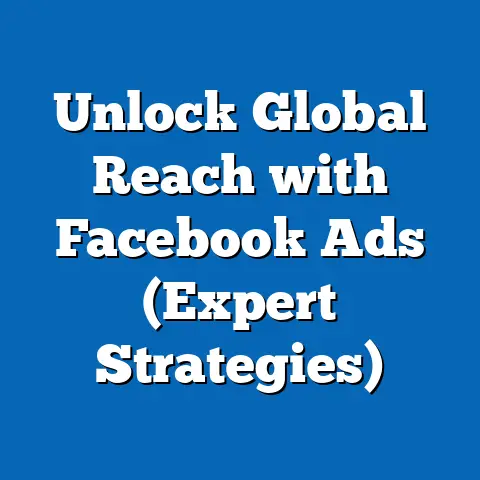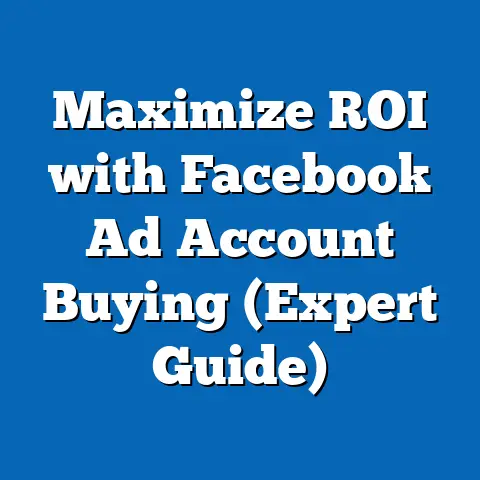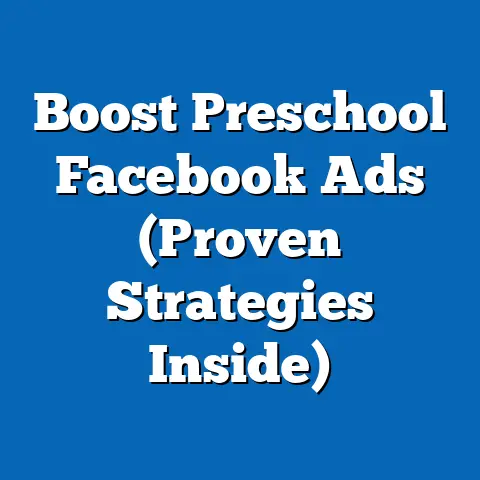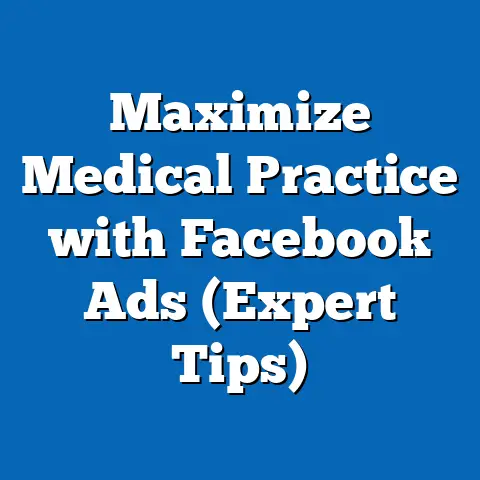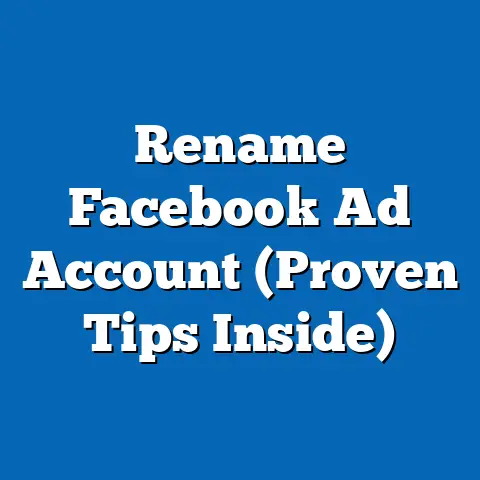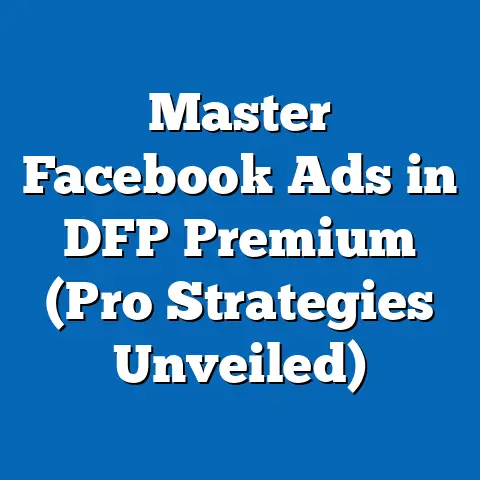Unlock 20 Irresistible Facebook Ad Copy Secrets (Pro Tips)
What if you could transform your Facebook ad copy into a powerful magnet, drawing in your ideal customers and boosting sales almost overnight? It’s a question I’ve asked myself countless times throughout my career in digital marketing. I’ve seen firsthand how the right words, strategically placed, can turn a mediocre campaign into a roaring success. In the fast-paced world of Facebook advertising, where users are bombarded with countless ads every day, compelling ad copy is no longer optional; it’s essential. It’s the difference between a casual scroll and an enthusiastic click, between being ignored and being remembered.
Facebook’s advertising platform holds immense potential for businesses of all sizes. From local boutiques to multinational corporations, the ability to target specific demographics, interests, and behaviors is unparalleled. However, this targeting power is only as effective as the message you deliver. A perfectly targeted ad with lackluster copy will fall flat, wasting both time and money.
Over the years, I’ve learned that creating irresistible Facebook ad copy isn’t about luck or guesswork; it’s about understanding the psychology of your audience, mastering the art of persuasion, and continuously refining your approach. That’s why I’m excited to share with you 20 proven secrets that can elevate your ad copy to new heights, making it truly irresistible to your target audience. These secrets aren’t just theoretical concepts; they’re practical strategies I’ve personally tested and refined in countless campaigns. Get ready to transform your Facebook ads from forgettable to unforgettable!
Understanding Your Audience
Before you write a single word, you need to deeply understand the people you’re trying to reach. It’s like trying to sell snow to someone living in the Sahara; unless you understand their needs (or lack thereof), you’re wasting your breath. Knowing your target audience is the cornerstone of effective advertising. It allows you to craft messages that resonate, build trust, and ultimately, drive conversions. Without this understanding, your ad copy will be generic, uninspired, and easily ignored.
Creating detailed customer personas is a crucial step. These personas are fictional representations of your ideal customers, based on research and data. Consider their demographics (age, location, income), interests, behaviors, and motivations. What are their aspirations? What keeps them up at night? The more you know, the better equipped you’ll be to write copy that speaks directly to them.
Market research is another essential tool. Use surveys, interviews, and social listening to gather insights into your audience’s needs, preferences, and pain points. Pay attention to the language they use, the topics they discuss, and the challenges they face. This information will be invaluable when crafting your ad copy.
Here are five secrets to help you connect with your audience on a deeper level:
1. Use Pain Points
People are more motivated to avoid pain than to gain pleasure. That’s why identifying and articulating your audience’s pain points is so effective. In your ad copy, clearly state the problem your product or service solves. For example, instead of saying “Our software is easy to use,” try “Tired of wasting hours on complicated software? Our solution simplifies your workflow and saves you time.” I’ve seen ads that directly address a common frustration perform significantly better than those that focus solely on positive attributes.
2. Emphasize Benefits Over Features
Features are what your product does, but benefits are what your product does for your customer. Benefits resonate more because they address the “what’s in it for me?” question that’s always running through your audience’s minds. Instead of saying “Our camera has 20 megapixels,” try “Capture stunning, high-resolution photos that will make your memories last a lifetime.” The key is to translate features into tangible benefits that address your audience’s needs and desires. I remember working on a campaign for a fitness app, and the ads that highlighted the benefits of increased energy and confidence vastly outperformed those that focused solely on the app’s features.
3. Utilize Audience Language
Using the same language as your audience creates a sense of familiarity and trust. It shows that you understand their world and speak their language. Pay attention to the words and phrases they use in online forums, social media groups, and reviews. Incorporate these into your ad copy to create a stronger connection. For instance, if you’re targeting gamers, use gaming slang and terminology. If you’re targeting millennials, use their specific vocabulary and humor. I once worked on a campaign targeting nurses, and using their specific medical jargon (correctly, of course!) instantly boosted the ad’s credibility and engagement.
4. Segment Your Audience
Not all members of your target audience are the same. Segmenting your audience based on demographics, interests, behaviors, and other factors allows you to tailor your message for different groups. For example, you might create separate ads for different age groups or those with different interests. This level of personalization can significantly improve your ad’s relevance and effectiveness. I’ve seen campaigns that doubled their conversion rates simply by segmenting their audience and creating more targeted ads.
5. Incorporate Social Proof
People are more likely to trust recommendations from others than claims made by a company. That’s why incorporating social proof into your ad copy is so powerful. Include testimonials, reviews, case studies, and other forms of social proof to build trust and credibility. For example, you could include a quote from a satisfied customer or mention the number of people who have already benefited from your product or service. I had a client who was initially hesitant to include customer testimonials in their ads, but once they saw the positive impact on conversions, they became a firm believer in the power of social proof.
Takeaway: Understanding your audience is the foundation of effective ad copy. By using pain points, emphasizing benefits, utilizing audience language, segmenting your audience, and incorporating social proof, you can create ads that resonate with your target audience and drive results. Next, we’ll dive into the art of crafting compelling headlines.
Crafting Compelling Headlines
The headline is the first (and often only) thing people see when they encounter your Facebook ad. It’s your chance to grab their attention and entice them to learn more. Think of it as the storefront window of your business; it needs to be attractive and intriguing enough to draw people inside. A weak headline will result in your ad being ignored, no matter how great the rest of your copy is.
A strong headline is clear, concise, and compelling. It should immediately communicate the value proposition of your product or service and pique the reader’s curiosity. It should also be relevant to your target audience and aligned with the overall message of your ad.
Here are five secrets to help you craft headlines that grab attention and drive clicks:
1. Use Numbers and Lists
Numbers and lists are incredibly effective in headlines because they create a sense of order and predictability. They also make it easier for people to scan and process information. Headlines like “5 Tips to Boost Your Productivity” or “10 Secrets to a Successful Marriage” are inherently more appealing than vague, unstructured headlines. I’ve consistently seen that headlines with numbers outperform those without them, especially when the numbers are odd.
2. Ask Provocative Questions
Asking questions can be a great way to pique curiosity and engage your audience. However, the questions need to be provocative and relevant to their interests. Avoid generic questions that anyone could answer. Instead, ask questions that challenge their assumptions or address a specific pain point. For example, “Are You Still Wasting Money on Ineffective Marketing?” or “Is Your Website Mobile-Friendly?” These types of questions can grab attention and encourage people to click to learn more.
3. Create Urgency
Creating a sense of urgency can motivate people to take action immediately. Use words and phrases that convey a limited-time offer or a scarce resource. For example, “Limited Time Offer: Get 50% Off Now!” or “Only 10 Spots Left: Sign Up Today!” However, be careful not to overuse urgency tactics or make false claims. This can damage your credibility and alienate your audience. I’ve found that genuine urgency, based on real deadlines or limited availability, is far more effective.
4. Incorporate Power Words
Power words are words that evoke emotion and create a strong impact on the reader. They can be used to make your headline more persuasive and memorable. Examples of power words include “amazing,” “powerful,” “secret,” “proven,” and “guaranteed.” Experiment with different power words to see which ones resonate best with your audience. I often keep a running list of power words that I find effective in different contexts, and I encourage you to do the same.
5. Be Clear and Concise
In the crowded world of Facebook advertising, you have limited time to capture attention. That’s why it’s essential to be clear and concise in your headlines. Avoid jargon, complex language, and unnecessary words. Get straight to the point and communicate the value proposition of your product or service in a clear and compelling way. I always try to write my headlines as if I’m explaining the offer to a friend in a single sentence.
Takeaway: A compelling headline is the key to getting people to notice and click on your Facebook ad. By using numbers and lists, asking provocative questions, creating urgency, incorporating power words, and being clear and concise, you can craft headlines that grab attention and drive results. Now, let’s move on to writing persuasive body copy.
Writing Persuasive Body Copy
The body copy is where the real persuasion happens. It’s your opportunity to elaborate on the promise you made in the headline and convince your audience that your product or service is the right solution for their needs. Think of it as the sales pitch that follows the initial introduction. The body copy needs to maintain the reader’s attention, build trust, and ultimately, drive them toward action.
Effective body copy is clear, concise, and compelling. It should be written in a conversational tone and address the reader’s specific concerns and desires. It should also include a strong call to action that tells the reader exactly what you want them to do next.
Here are five secrets to help you write persuasive body copy that converts:
1. Storytelling Techniques
Storytelling is a powerful way to build emotional connections and engage your audience. People are more likely to remember and respond to stories than to dry facts and figures. Use storytelling to illustrate the benefits of your product or service and show how it has helped others. For example, you could share a case study of a customer who overcame a challenge using your product or tell a personal story about how your product has impacted your own life. I often start my body copy with a short, relatable anecdote that draws the reader in and sets the stage for the rest of the message.
2. Utilize the AIDA Formula
The AIDA formula (Attention, Interest, Desire, Action) is a classic copywriting framework that can help you structure your body copy in a persuasive way. First, grab the reader’s attention with a compelling opening line. Then, build their interest by highlighting the benefits of your product or service. Next, create desire by showing how your product can solve their problems and improve their lives. Finally, prompt them to take action with a clear and compelling call to action. I find that using the AIDA formula as a checklist helps me ensure that my body copy covers all the essential elements of persuasion.
3. Incorporate Visual Elements
Visuals can significantly enhance the engagement and effectiveness of your ad copy. Use high-quality images and videos that are relevant to your message and visually appealing to your target audience. Visuals can help to capture attention, illustrate the benefits of your product, and create an emotional connection with your audience. I always test different visuals to see which ones perform best, and I pay close attention to the visual style and branding to ensure consistency with my overall marketing efforts.
4. Use Clear Calls-to-Action (CTAs)
A clear and compelling call to action is essential for driving conversions. Tell the reader exactly what you want them to do next, whether it’s to “Learn More,” “Shop Now,” “Sign Up Today,” or “Get a Free Quote.” Use action-oriented language and make your CTA visually prominent. I often use contrasting colors and button designs to make my CTAs stand out. Also, I always test different CTAs to see which ones generate the most clicks.
5. Keep It Simple
Simplicity is key to effective body copy. Avoid jargon, complex language, and unnecessary details. Write in a clear, conversational tone that is easy to understand. Focus on the most important benefits of your product or service and avoid overwhelming the reader with too much information. I always try to write my body copy as if I’m explaining the offer to a friend over coffee.
Takeaway: Persuasive body copy is essential for converting attention into action. By using storytelling techniques, utilizing the AIDA formula, incorporating visual elements, using clear calls-to-action, and keeping it simple, you can craft body copy that resonates with your audience and drives results. Finally, let’s explore the importance of testing and optimization.
Testing and Optimization
Even the best ad copy can be improved based on data and performance insights. The Facebook advertising landscape is constantly evolving, and what works today might not work tomorrow. That’s why it’s essential to continuously test and optimize your ad copy to ensure that it’s performing at its best.
Testing and optimization involve experimenting with different variations of your ad copy, tracking key metrics, and making adjustments based on the results. This is an ongoing process that requires patience, attention to detail, and a willingness to adapt to changing trends.
Here are five final secrets to help you test and optimize your ad copy for maximum impact:
1. A/B Testing Variants
A/B testing involves creating two or more versions of your ad copy and testing them against each other to see which one performs better. You can test different headlines, body copy, visuals, and calls to action. The key is to change only one element at a time so you can accurately measure its impact. I typically use Facebook’s built-in A/B testing tool to run my tests, and I make sure to run them for a sufficient period of time to gather statistically significant data.
2. Analyze Performance Metrics
Tracking key performance metrics is essential for understanding how your ad copy is performing. Pay attention to metrics like click-through rate (CTR), conversion rate, cost per click (CPC), and return on ad spend (ROAS). These metrics can reveal valuable insights into what’s working and what’s not. I often create a dashboard to track these metrics in real-time, and I regularly analyze the data to identify areas for improvement.
3. Adjust Based on Feedback
Audience feedback can be a valuable source of information for refining your messaging. Pay attention to comments, reviews, and social media mentions. What are people saying about your ads? What are they responding to? Use this feedback to make adjustments to your ad copy and improve its relevance and effectiveness. I often engage with my audience in the comments section of my ads, asking for their opinions and addressing their concerns.
4. Experiment with Formats
Facebook offers a variety of ad formats, including image ads, video ads, carousel ads, and collection ads. Experiment with different formats to see which ones resonate best with your audience. Some formats might be better suited for certain types of products or services. I always try to match the ad format to the message I’m trying to convey, and I test different formats to see which ones generate the most engagement and conversions.
5. Stay Updated with Trends
The world of digital marketing is constantly evolving, and it’s essential to stay up-to-date with the latest trends and best practices. Follow industry blogs, attend webinars, and connect with other marketers to stay informed. What’s working for others? What new techniques are being used? Incorporate these insights into your own ad copy to stay ahead of the curve. I make it a point to dedicate time each week to learning about the latest trends in Facebook advertising, and I’m always looking for new ways to improve my skills.
Takeaway: Testing and optimization are essential for maximizing the impact of your Facebook ad copy. By A/B testing variants, analyzing performance metrics, adjusting based on feedback, experimenting with formats, and staying updated with trends, you can continuously refine your ad copy and drive better results.
Conclusion
Mastering Facebook ad copy is a crucial skill for any business looking to grow and engage its audience. The ability to craft compelling, persuasive messages that resonate with your target audience can unlock the full potential of the Facebook advertising platform. It’s not just about writing pretty words; it’s about understanding the psychology of your audience, mastering the art of persuasion, and continuously refining your approach based on data and insights.
I encourage you to implement these 20 secrets in your own Facebook ads and remember that effective copywriting is both an art and a science that requires practice and dedication. Don’t be afraid to experiment, test different approaches, and learn from your mistakes. The more you practice, the better you’ll become at crafting irresistible ad copy that drives results.
The power of words in digital marketing is undeniable. By investing in honing your copywriting skills, you can unlock a world of possibilities for your business. You can attract new customers, build stronger relationships, and ultimately, achieve your marketing goals. So go forth, embrace the challenge, and let your words work their magic!
Effective copywriting is a journey, not a destination. It requires continuous learning, adaptation, and a willingness to embrace new ideas. But the rewards are well worth the effort.
Call to Action
I’d love to hear about your experiences with Facebook ad copy. Which of these 20 secrets do you plan to implement first? Share your thoughts and questions in the comments below, and let’s learn and grow together! Your insights could inspire others and help us all become better marketers.

